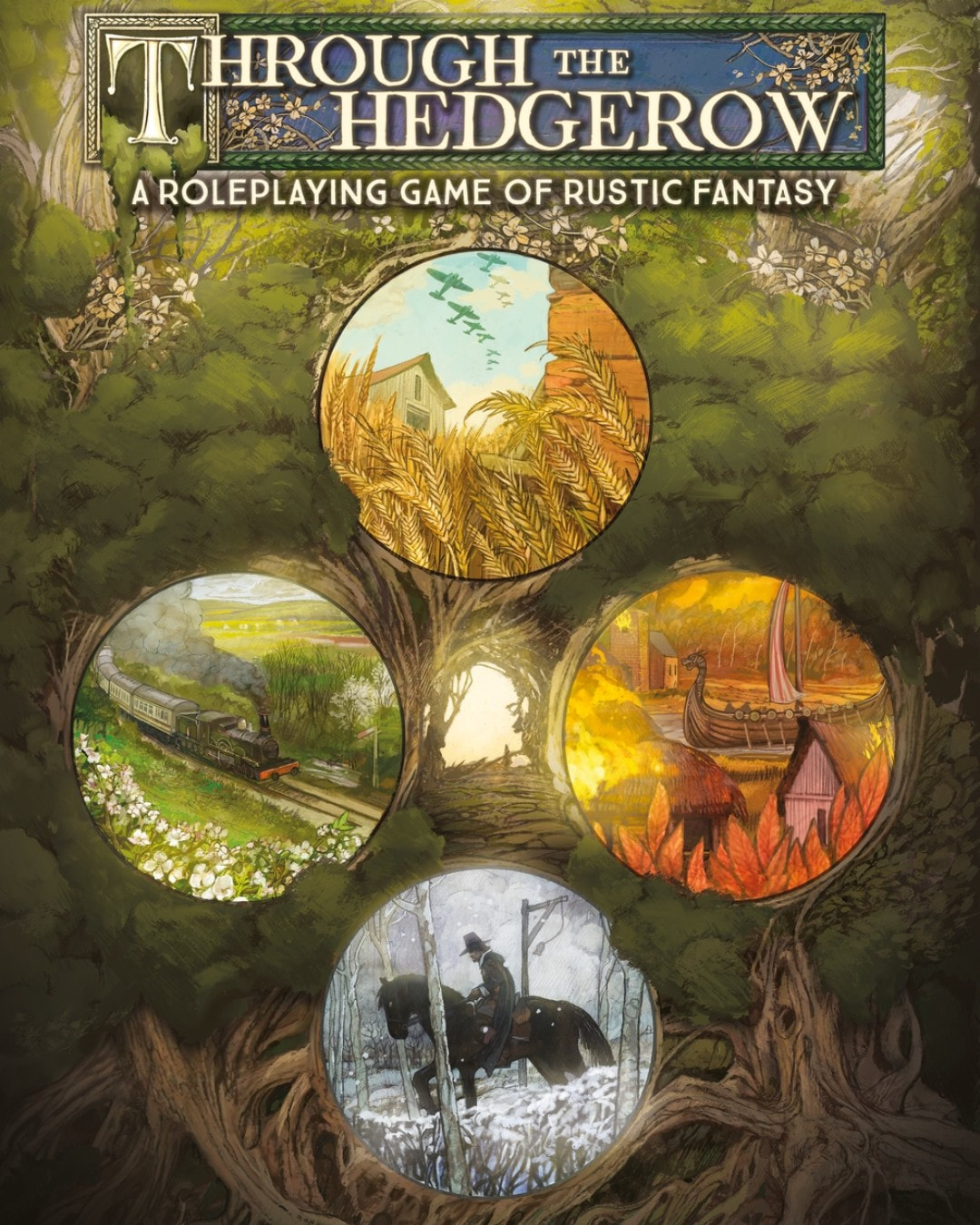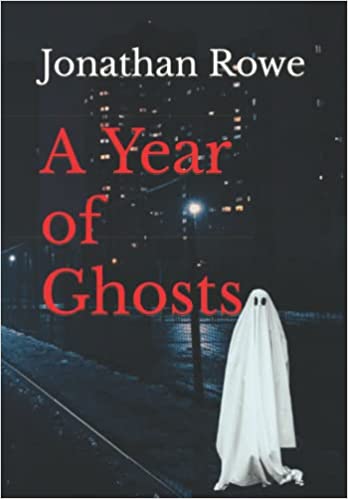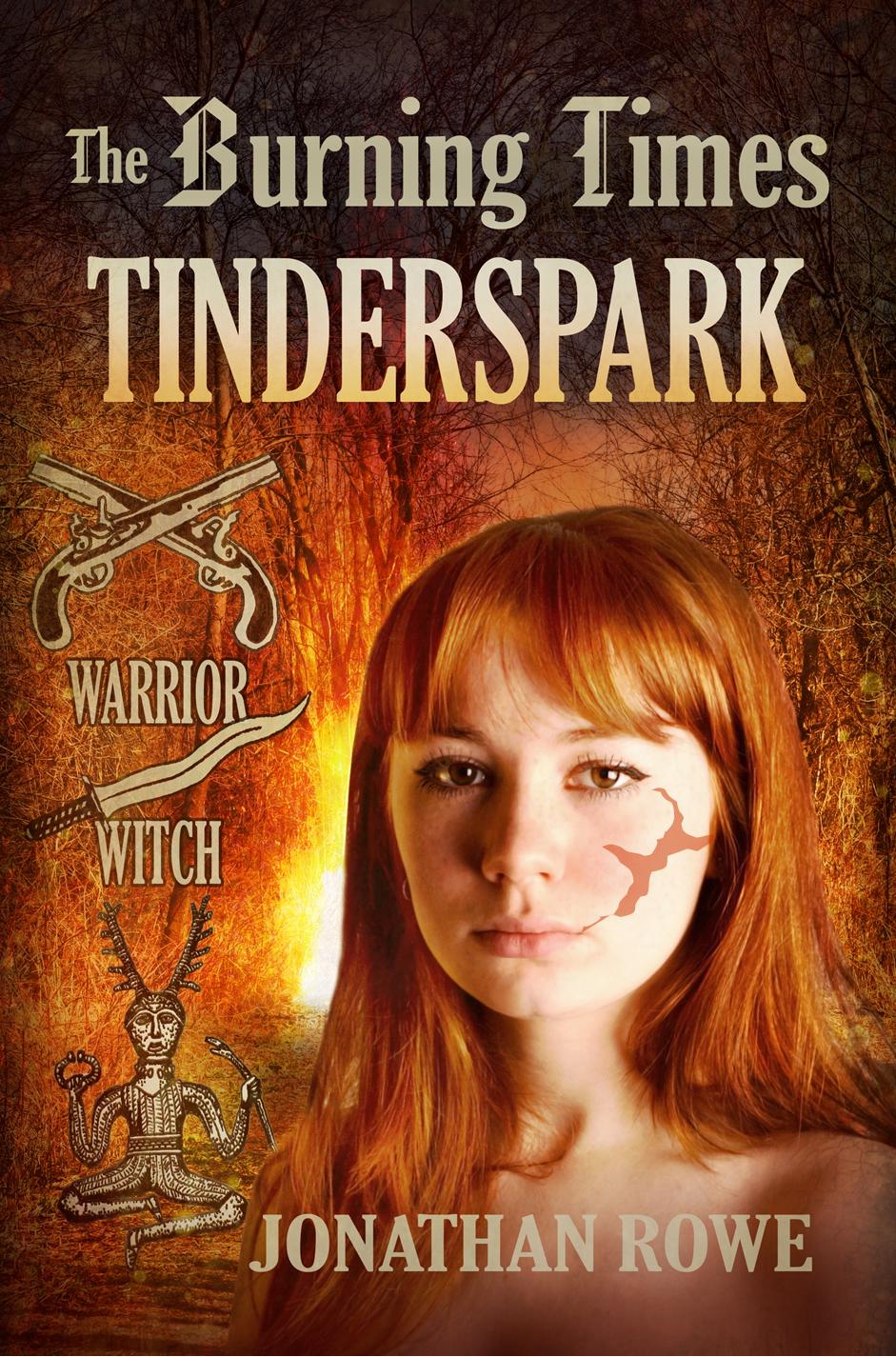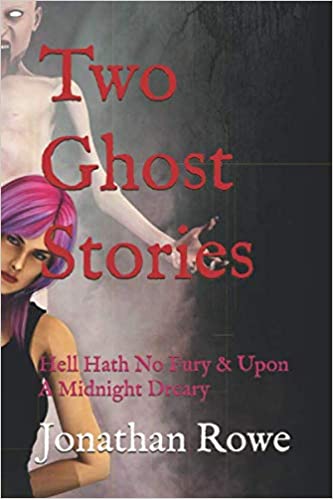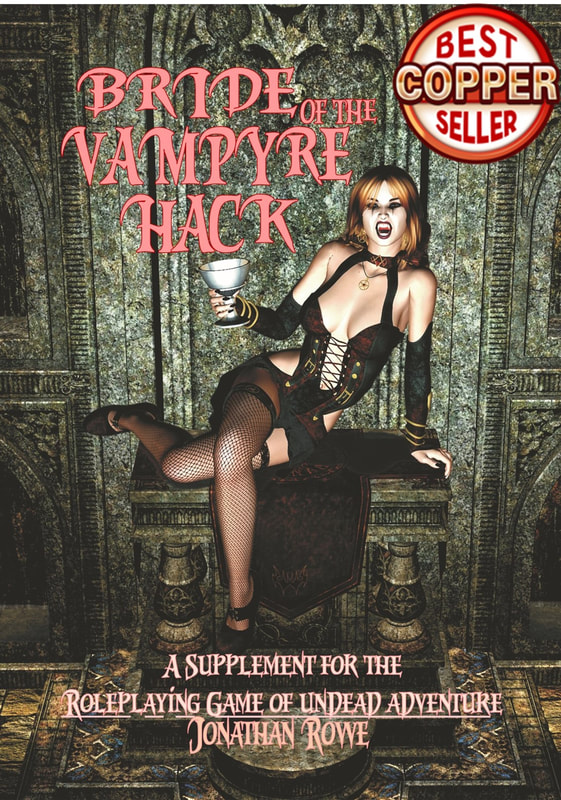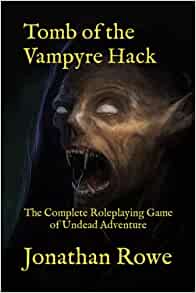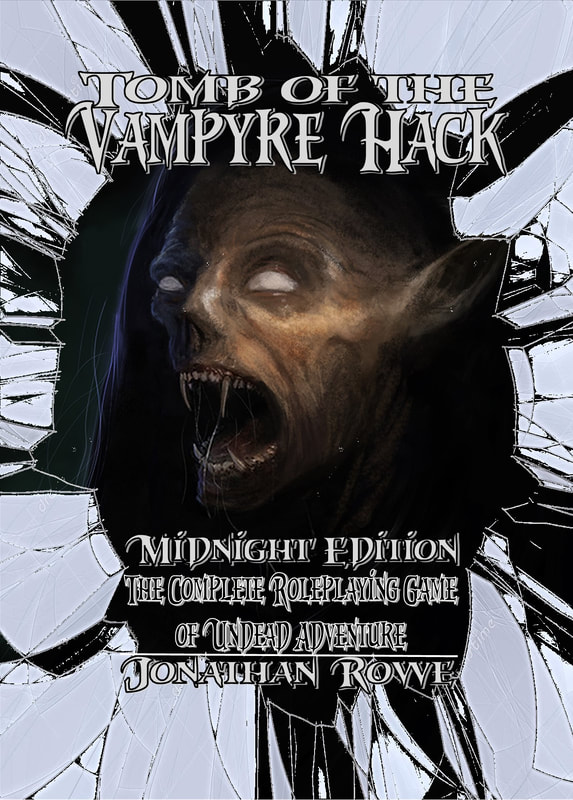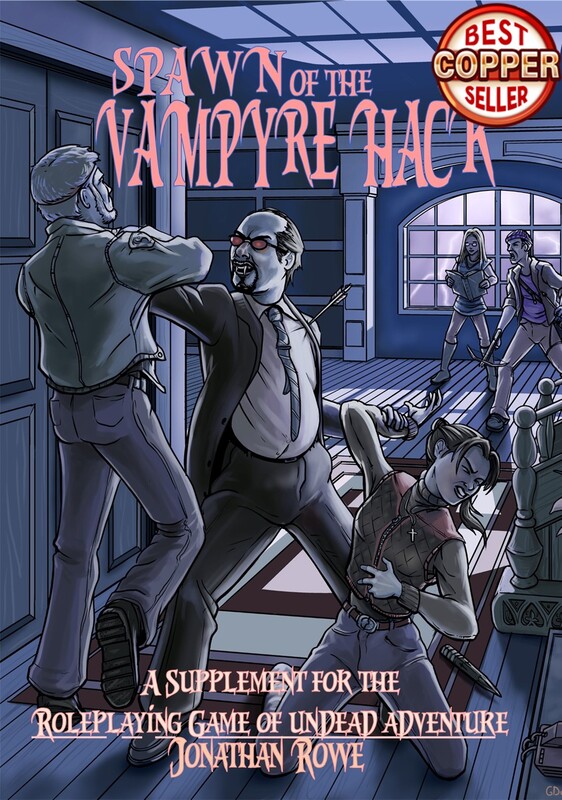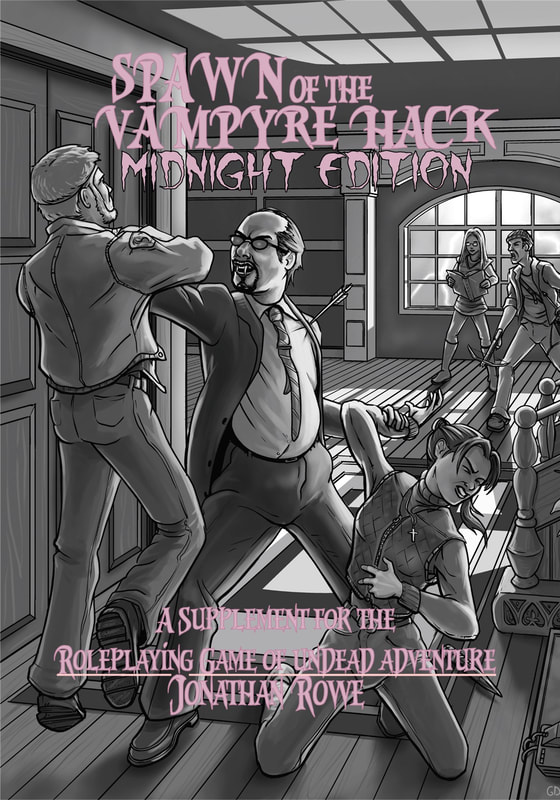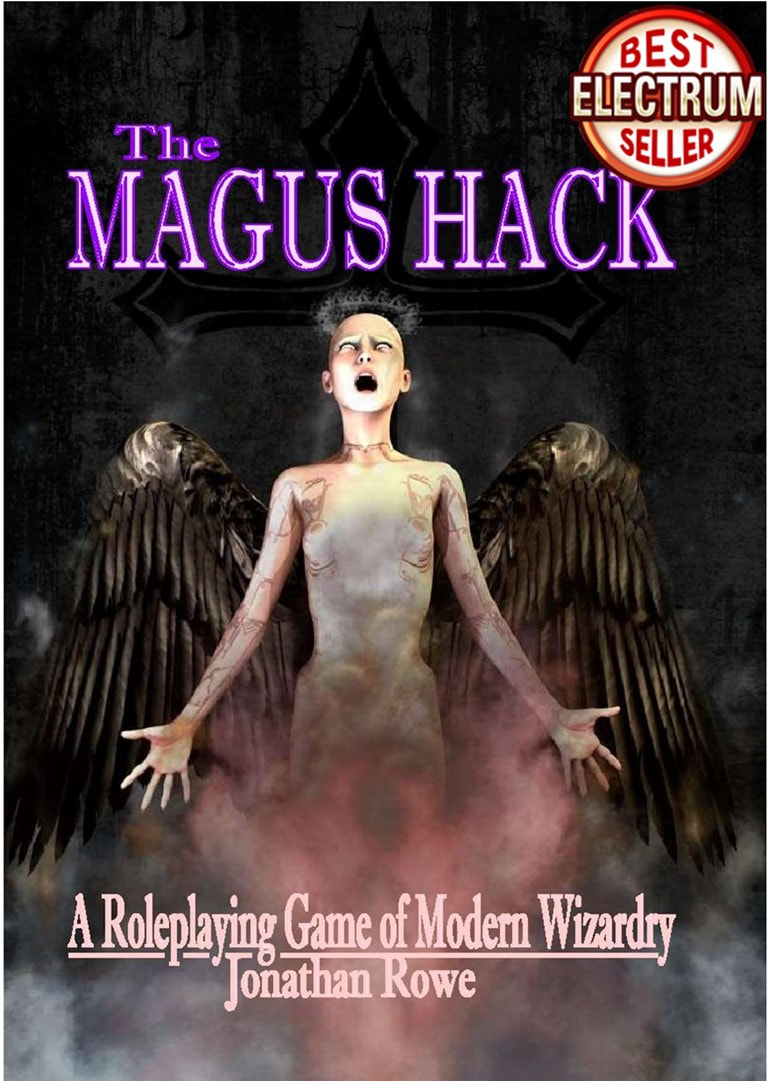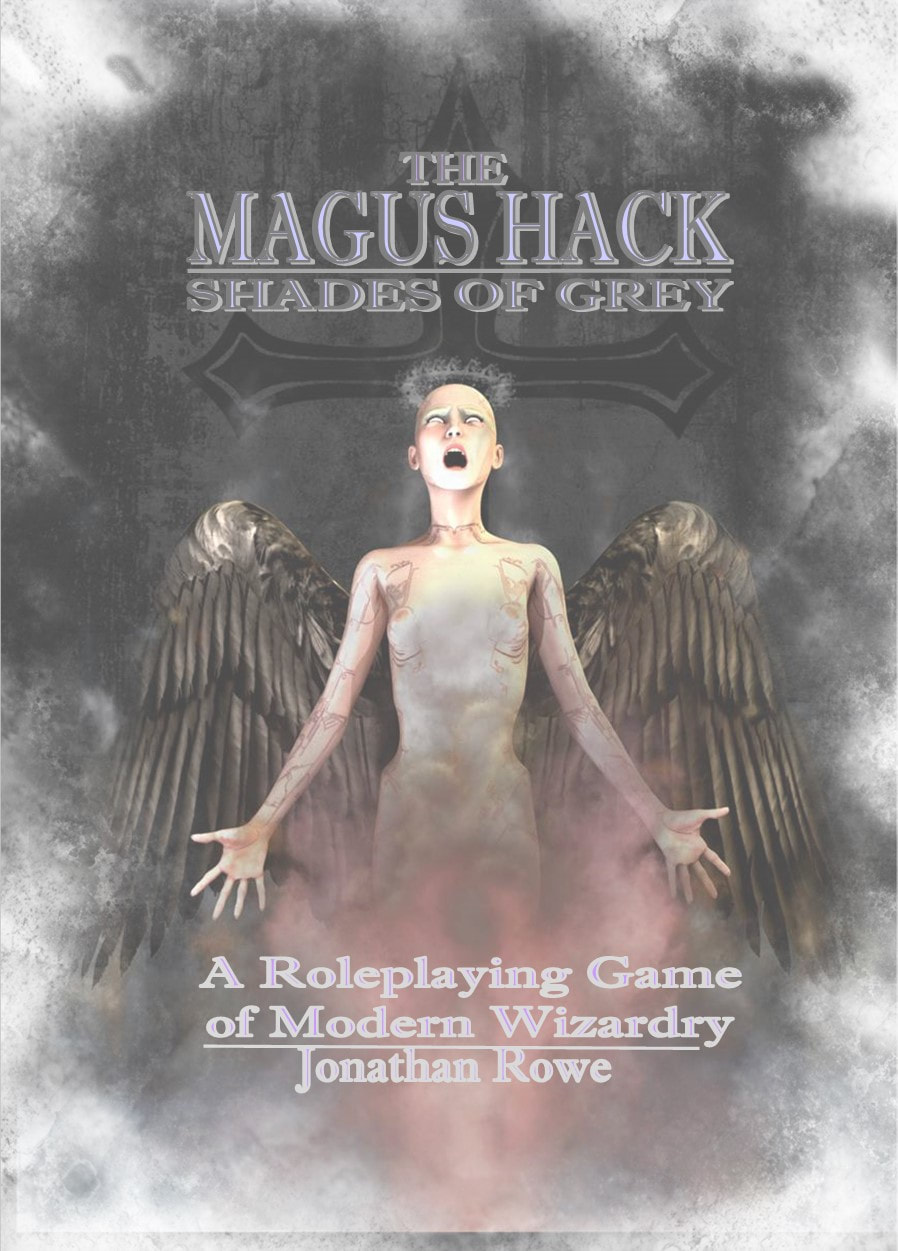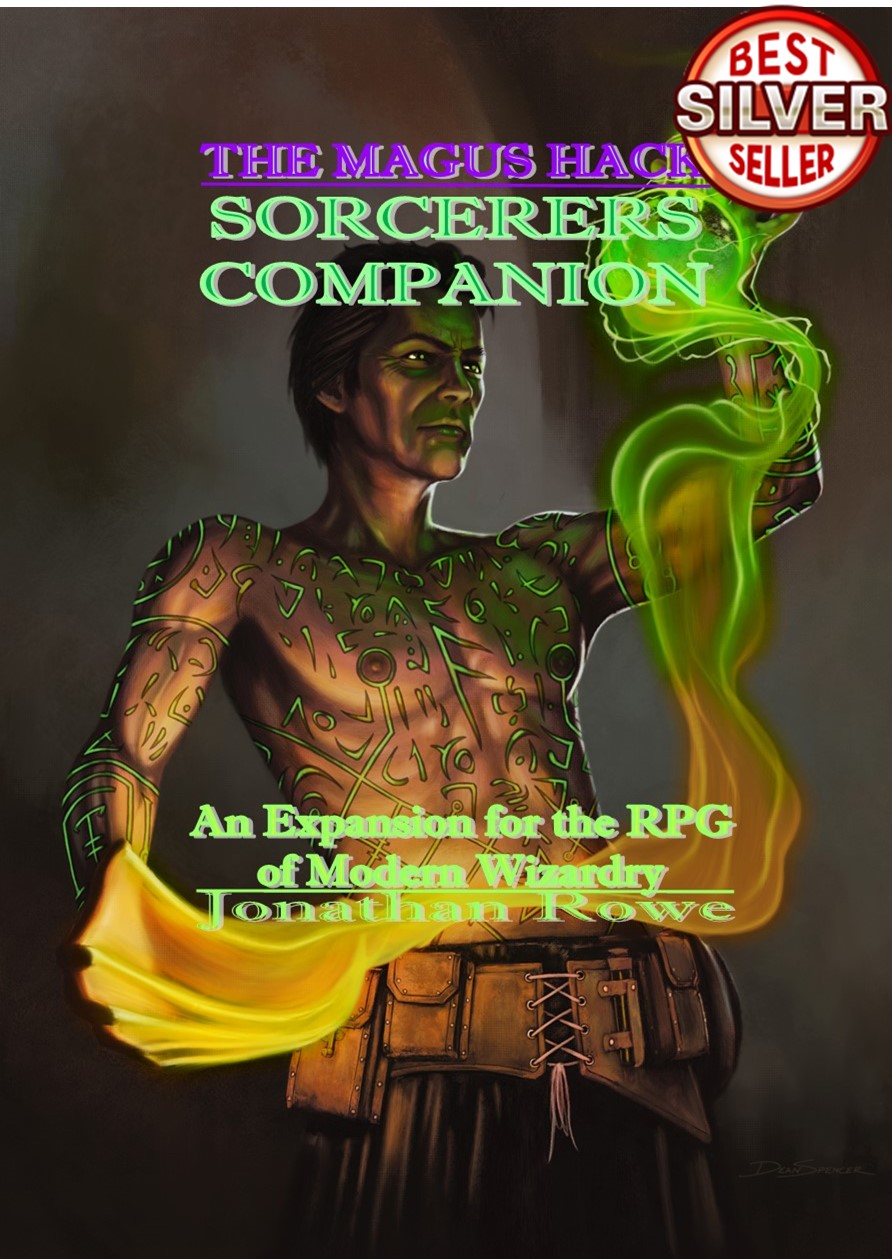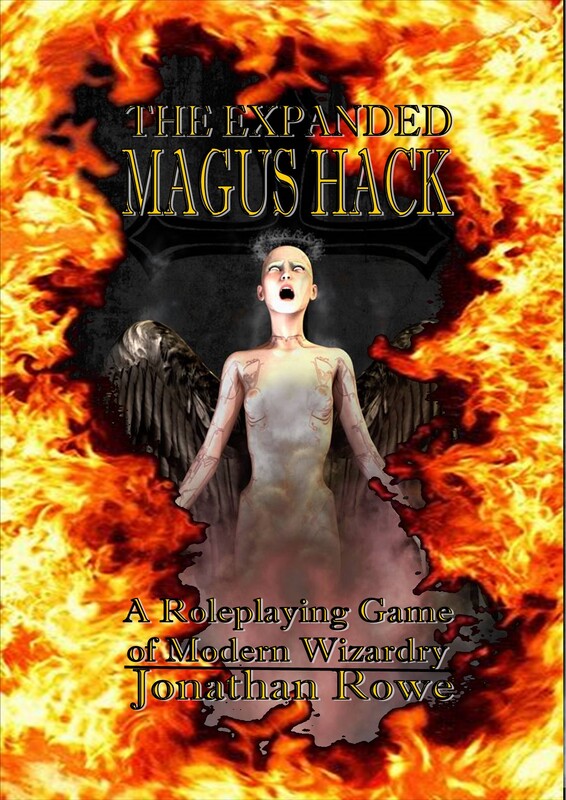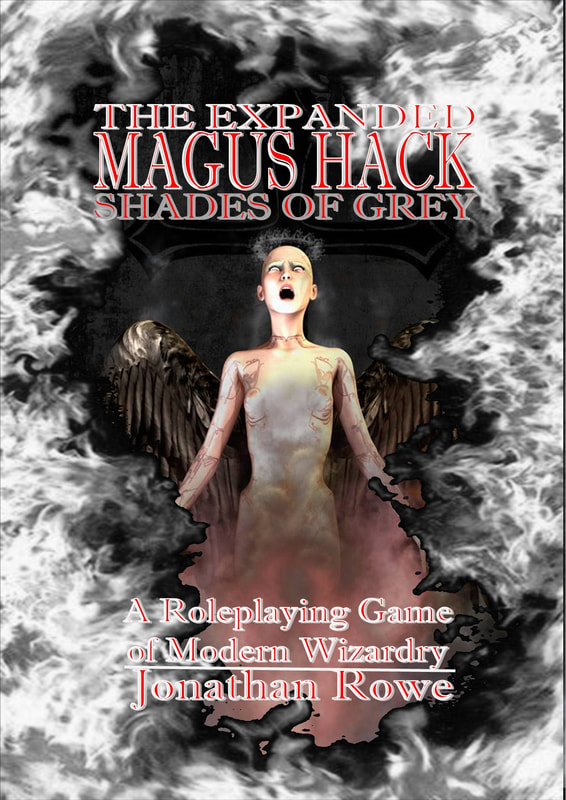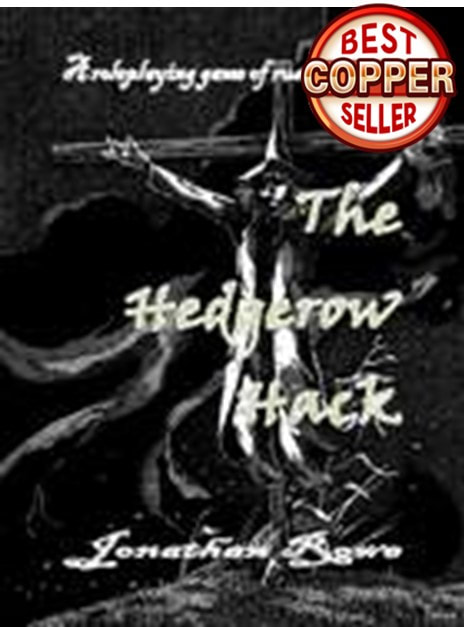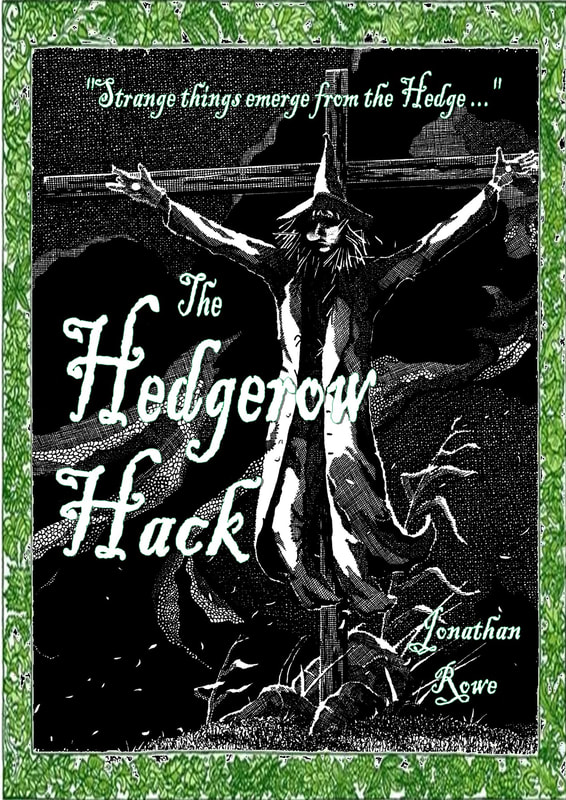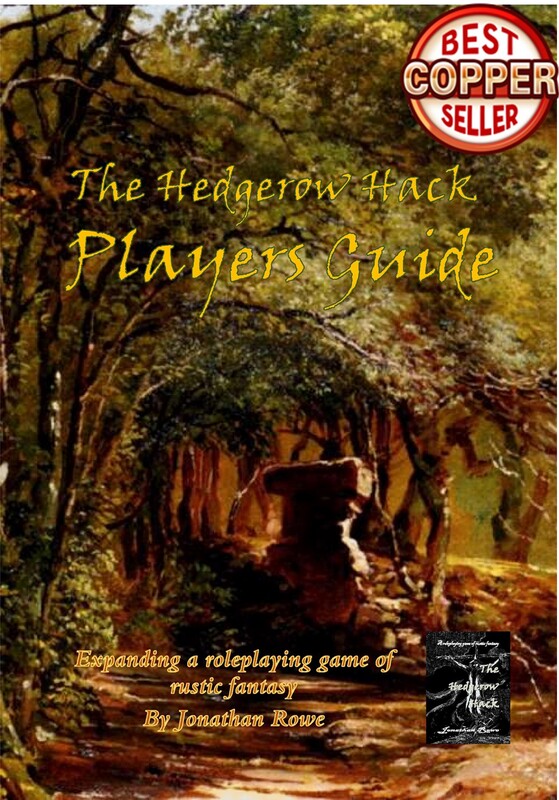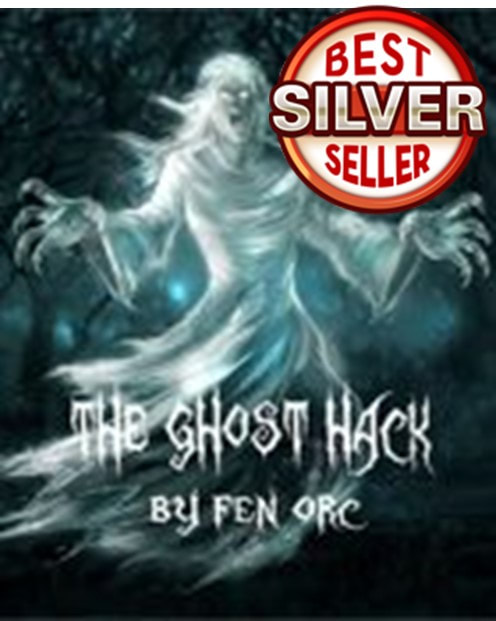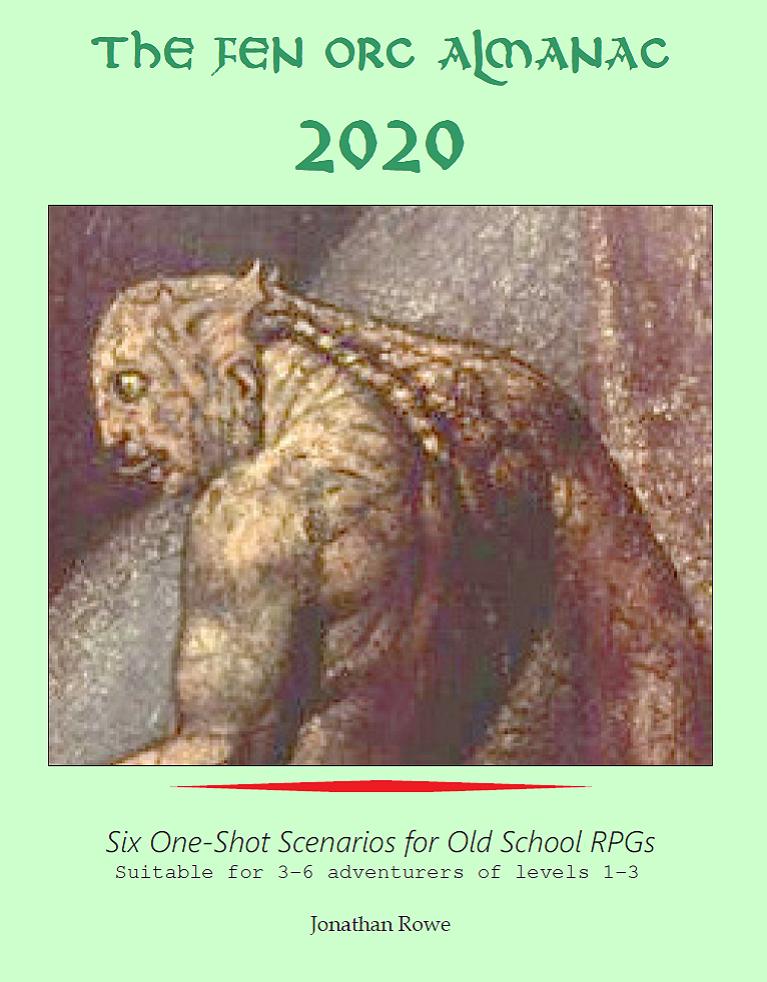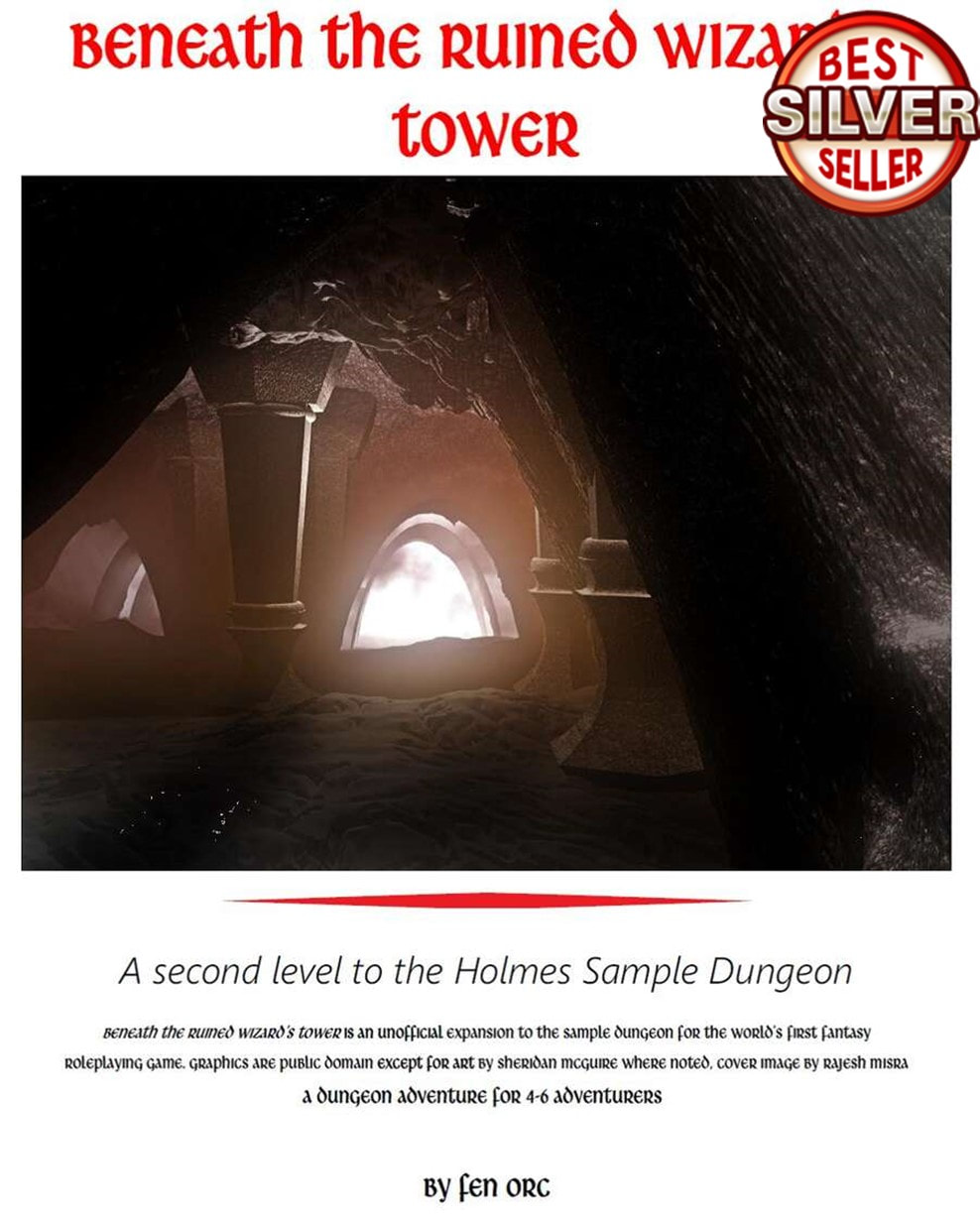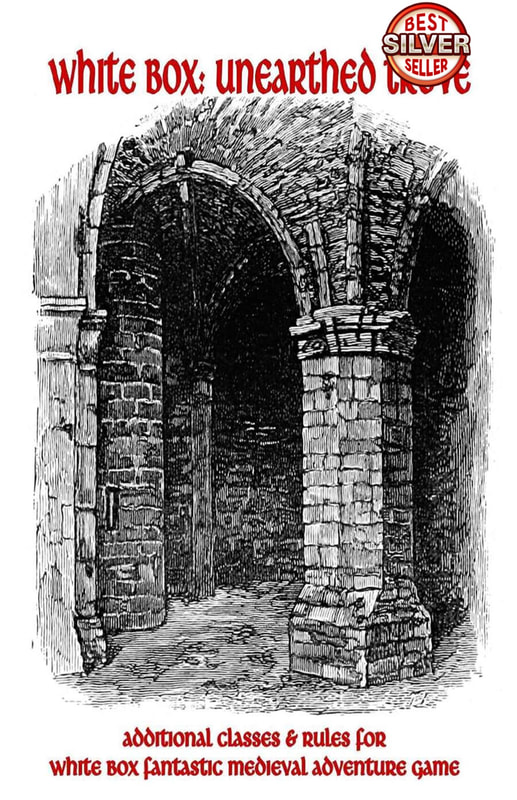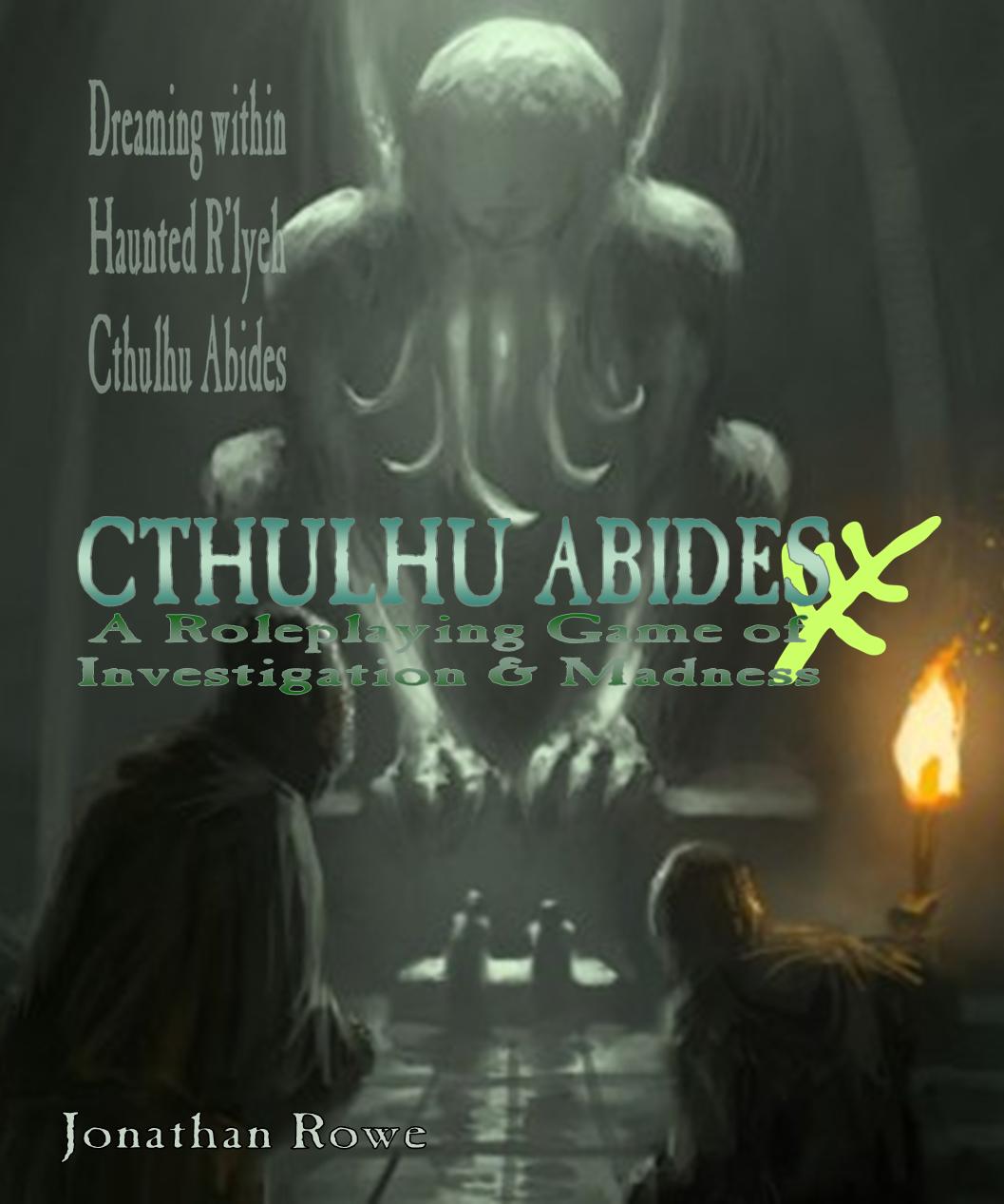|
I recently had fun dusting off and refining my No Fear Psionics rules for Dragonslayer RPG. Now it's time to add the psionic monsters to the Dragonslayer roster - and that means an opportunity to reconsider these (largely underused) critters and their contribution to D&D over the years. Most of these monsters are familiar from the revered 1st edition Monster Manual (1977), although Githyanki and Githzerai turned up in the later Fiend Folio (1891). However, many of these monsters pre-date AD&D. They first appeared in 1976's Eldritch Wizardry supplement along with the first rules for psionics. In fact, Mind Flayers go back even further, to the first issue of Strategic Review in 1975. So, whatever you might think of psionics (and most people seem to think very poorly of psionics), these are 'core monsters' who perhaps deserve a little more love. Perhaps. Whoops!!!! I'd love to see a D&D monster manual from 1891, but we all know the Fiend Folio was from 1981. Thanks, Internet, for catching this one! The 'Psi Pests'This is a suite of monsters who function more as traps than as combat encounters. Think of them as 'psi pests' - the grit in the ointment of psionicism, inconveniences you have to take account of once you've become psi-aware.
In AD&D, these beasties drain your psionic defence points at quite a rate. You can't psionic them back: you have to dig them up and splat them (they've only got 1hp) or run away. Much merriment as the psionicist writhes, screaming 'Get them out of my MIND!' while the rest of the party grabs shovels to dig out these rodents and play whack-a-mole. Much less merriment if the victim is someone using psionic-style magic, in which case there's a solid chance of permanent insanity. It's a bit hard to imagine placing these creatures in a dungeon or wandering monster table: if you're not using your powers, they do literally nothing; if you are, then non-psionicists might end up losing a PC to them, while actually psionicists probably only face losing a lot of points that they can restore by resting. Cerebral parasites are mere annoyances. They attach themselves to you if you're using psionics or psi-magic while they are nearby and they drain your psionic power. Cure disease gets rid of them once you know they're there, so keep a cleric or paladin handy. I could imagine a cruel DM placing these things on a magic item or an infested monster, so the PCs acquire them during looting. Players will quickly realise what's going on as their psionic strength drains away - so if you don't like psionics but a PC has got them, infesting them with parasites is a great way of making sure they can't use their powers . The psi-variant grey oozes and yellow molds are entertaining twists on familiar monsters. Their psionic powers are pretty much one-shot-and-done, but I like the idea of a mold dominating a hapless psionicist and using them to attract more victims.
I've allowed Tower of Iron Will to count as an partial defence against thought eaters, just so that experienced psionicists can do something against these things - otherwise, ditch your armour and run away. Mid-Level Mind Menaces
The point is, if the psionicist accidentally summons these things with a mental shriek, her non-psionic comrades will be less than impressed!
Stross's original Githyanki were really just high level human fighters and magic-users (with a few anti-paladin bosses), hanging out on the Astral Plane, wielding OP magic swords, and riding red dragons, plus pretty fulsome psionic powers The Githzerai were boring by contrast - but then, pretty much anything is boring by contrast with that. I've toned down the swords (I mean, why would you make them intelligent as well?) and devised a simpler table for randomly generating a Gith band and their equipment. Essentially, this is a slimmed down version of the two groups suitable to be 'psionic wandering monsters.' I've made the Githzerai into monks and illusionists, to distinguish them somewhat from the Githyanki, and given both groups a resistance to mind flayers' anti-magic (otherwise, why on oerth would they specialise in being spellcasters?). Naming the silvery material they forge into swords and armour as orichalcum is a nod to medieval alchemy.
Next, it's those tentacles, which slurp your brain 1d4 rounds after a successful hit, no save.
I've toned mind flayers down a bit. In my 'No-Fear Psionics' rules, Tower of Iron Will is pretty good against psionic blasts, forcing the MF to roll to hit AC 0 against everyone protected by it - and then saving throws for the non-psionicists too. I allow you to whack the tentacle that's reaching for your brain, forcing it to withdraw. I've made their anti-magic a flat 1-5 on a d6 immunity - and I think PC spellcasters should be able to take a Feat like 'Astral Magic' that overpowers magic resistance, reducing its effectiveness to 1 in 6.
These monsters raise questions in my mind about what the original designers intended for psionics. Psionic combat gets very unbalanced when someone is outnumbered, which is probably why all of these monsters only turn up in groups of 1-4. Heaven help you if you end up in a Githyanki lair, because no individual can resist multiple competent psionicists coordinating their attacks. Mind flayers and intellect devourers seem to be designed to force you to engage with them psionically. MFs are practically immune to magic and the tentacles deter anyone from entering melee combat with them. IDs are pretty much immune to anything you can throw at them besides psionics. In other words, if you don't use psionics in your campaign, you can't reasonably deploy these iconic monsters, at least not RAW. Top Tier TelepathsWhen Eldritch Wizardry first introduced demons, a number of them were revealed to be powerful psionicists. It doesn't really hang together for me. Demons and devils seem to be the embodiment of clerical magic or sorcery, not SF-themed psionics. Psionics fit well with the alien mind flayers and their githian rebels. Why do infernal beings have psionics?
If the embodiments of evil are psionicists, then the avatars of good need to be psionic too. In EW, couatl, shedu, and ki-rin get psionic powers and titans are entirely immune to psionic attack. Then the Monster Manual goes and gives titans psionic attack modes too, which is dumb. Titans can wander into the infernal realms and psionically clobber demon lords are arch-devils and there's nothing the bad guys can do to them in return. Silly. Also silly is the lazy way couatl are assigned "9 to 16 clerical abilities with commensurate attack and defence modes" - the Monster Manual restricts it to 6 powers but retains the baffling reference to "commensurate" modes, whatever that means. Since Greg Gillespie didn't see fit to import shedu or ki-rin into Dragonslayer, I'm not going to bother either. I doubt anyone misses them. I've assigned some psionic stats to couatl and I recommend making titans fully immune to psionics, but without any psionic attack powers, as per original Eldritch Wizardry. Begun, the Mind Wars Have ...!?!If you have a psionic PC in your campaign and you use my No-Fear Psionics rules, you might decide to use the 'alarm' penalty for psionic misuse. This means that, once Psionic Stress builds too high, the psionicist discharges it in a psychic shriek that attracts psionic wandering monsters. This gets you over the problem of stocking dungeons with brain moles or thought eaters - they might turn up anyway if the psionic PC is careless or unlucky. This procedure implies something going on in the deep campaign background: a sort of psychic cold war: the Mind War. Obviously, the Mind War is being fought between the mind flayers and the githians, but secret societies and monastic orders will also be training their members and venturing into the psychic battlefield. At the highest level, maybe infernal and divine beings are the generals - or maybe the real warlords are beholders (ahem, eye tyrants) or duergar or dark elves, maybe nagas or sphinxes or even psionic dragons. PC psionicists start off encountering psychic predators and scavengers, but as they rise in power they start meeting the scouts and shock troops of the Mind Wars. You can try telling those Githians that you're just treasure-seeking adventurers, because they will reply that you only think that's wjhat you are, that your motives and memories are not your own - then they psionic blast you. High level PCs might decide to get involved in the Mind Wars. They will probably die before they figure out what's going on. It's not just the monsters being teleported into your fortress or your loved ones being dominated into killing you - it's the realisation that you can't trust your memories, that you may in fact be dreaming, that you cannot even be sure you are who you think you are. Damn - now I want to run a high level psionics campaign.
0 Comments
Through The Hedgerow is a RPG inspired by fairy tales, albeit odd ones. Four of the types of Player Characters are Fays. They are eldritch beings of the Otherworld who find themselves travelling the highways and bridle-paths of the Old Shires, carousing in roadside inns, hiding in ruined monasteries, or ruling their estate from ivy-crusted manors. How do you roleplay a Fay being? What are their motives and goals? Since they have their origin in fairy tales, here is the first of four tales to introduce the Fay Gentries of the Old Shires. Through The Hedgerow Buggeber by Peter Johnston The Tale of King Alfred and the BuggeberOnce upon a time, but not so far away, there was a King named Alfred, who had lost his Kingdom. The Kingdom was Wessex, which in those days was part of the Old Shires, and King Alfred had fought many battles to defend the Old Shires against their enemies. One by one, his friends and family died or deserted him, until eventually King Alfred could fight no more. Alone and humiliated, he fled to the fens of Athelney to hide himself. With night falling, King Alfred arrived at the house of the Fenwitch. He knocked on the door and the Fenwitch spoke from within: "Who's there?" Alfred replied: "It is Alfred, your King, armoured and armed to defend this land, and I need shelter to hide from my foes." "My little house is too low for so high a guest as a king," said the Fenwitch, "so you must set aside your crown if you would enter in." This Alfred did, though it daunted him to set aside his crown. "My little door is too narrow for so broad a guest as an armoured warrior," the Fenwitch continued. "Take off your mail byrnie and set it aside if you would enter in." This Alfred did, though it misgave him greatly to set aside his mail byrnie. "My little bones are too fragile," the Fenwife said, "to endure the presence of a guest armed with a sword. Lay your weapon down if you would enter in." Alfred debated with himself concerning this, for his sword Goldenhilt was an heirloom of his grandfather, who slew Beornwulf of Mercia. Runes were upon its hilt and jewels upon its pommel. Nevertheless, he laid it down. Entering the house, Alfred beheld a cauldron in which a meat broth was cooking, and an oven in which seed cakes were baking. art by Peter Jackson ©Look & Learn "What would you have, O King?" demanded the Fenwitch. "My broth is sustenance for a warrior, but my seed cakes are dainties for a land at peace. Choose." Alfred gazed upon the chunks of meet that bobbed within the broth. They were most appetising to him and the smell of it set his mouth watering. Nevertheless, he answered in this wise: "I have been a King of war and met only with misfortune. I will sample the dainties of peace, though it seems your cakes are still awhile to bake." The Fenwitch seemed pleased with this answer and instructed him thus: "Tonight must I go to visit with my sister in Cernyw. Abide you here, until my cakes are ready. But beware, for this night shall a monster visit this hall, the troll named Buggeber that hungers for mortal flesh. He does not wait on invitation. Do not let him sup from my cauldron, for if he does, he shall grind your bones to make bread for his broth." Alfred cried, "How shall I oppose such a fiend, having set aside my crown, my mail, and my sword?" But the Fenwitch made no reply, for she was gone, and Alfred was alone in the darkening hall. The long watches of the night passed slowly for the unhappy king. How he hungered to sup from the broth, but he remembered his choice to break his fast upon the dainties of peace. He prayed to the All-Ruler, but in this haunted place his prayers were mute. Then, at the darkest hour of the night, the Buggeber entered in. Old he was, that Buggeber, born in the ancient darkness, they say: one of the children of Cain, who carry the sign of the Murderer upon them to trouble a sinful world. Like steel were his long claws, like the pelt of a bear were his matted hairs, upon his neck there was no head, save only a maw of many teeth that gnashed and drooled. "Step aside, mortal man," the creature roared, "for I hunger. I hunger for blood, I hunger for flesh, I hunger for bones, bones, bones!" The Buggeber reached for the cauldron, his long tongue lolling down his chest. Up spoke Alfred, and these were his words. "I have a sweetmeat for you daintier than a witch's broth. A tall warrior, whose golden hair sways in the summer wind. Struck down, he is, by a sharp blade. Into the ground, his bones are laid. Then behold, he rises again." "Where is this wondrous warrior?" muttered the Buggeber. "For I see only you here, with no armour nor sword. Bring this warrior before me and I shall rend him with my claws." Then Alfred said, "It will avail you nothing, for he will rise again wherever his bones are laid. But look, I have captured him and crushed him and placed him in a small cell. Will you sate your hunger upon him now?" "Right willingly!" roared the Buggeber. "Bring me the warrior's body!" Whereupon Alfred took up a pair of iron tongs and withdrew from the oven the skillet bearing the seedcake. "But what is this?" howled the Buggeber. "This is not a warrior's flesh, but a cake of flour." Alfred answered him this: "The wheat is a warrior who sways in the summer wind. The seeds are his bones that rise again in spring. This cake is his body. Will you share with me now the dainties of peace?" Then Alfred and the Buggeber broke their fast together upon seed cake. In the morning, the Fenwitch returned to find her cauldron undisturbed and the fierce Buggeber now as meek as a newly baptised infant. She carved for him a face from a turnip in her garden. The Fenwitch counselled Alfred, "You have sojourned here a night, but a season has turned in the affairs of mankind. Behold, your kinsmen and vassals come seeking you. An army assembles: the men of Somerset, the men of Wiltshire, the men of Hampshire. Leave now, Alfred, you have a kingdom to rule." King Alfred departed from Athelney and lo! his army waited for him in the Somerset Levels. And it is said that the Buggeber went alongside him, who was now the most loyal of all the King's knights. Jack O Bear by Jrusteli on DeviantArt Buggebers as PCsRoleplaying a fairytale monster is cool, even more so if the monster is a hairy troll with claws and a carved turnip for a head. Not everyone will flee in terror when you approach. The Glamour is a magic that stops mortals from recognising Fays. Most humans see you as big and imposing, perhaps rather savage-looking and hairy, but they only see the monster if they look shrewdly, or with the eyes of Innocence, or if they brandish Cold Iron at you. Buggebers start off as Martial characters who can acquit themselves in a fight - especially with their size and claws. They are also Arcane characters with an affinity for Dark Sorcery, so they can use some of the more destructive spells without penalty. Roleplaying a Buggeber revolves around your Appetites, which are the things you yearn to eat. Each character has their own selection of appetites, which are all quite abstract: for example, a wild beast, something that's been dead for a long time, something that's been specially prepared. Given the game's themes of riddles and illusions, you can match these descriptions in odd and imaginative ways. Something with the insignia of a wild beast might satisfy you - or something that share the same name as one. Like other Hedgerow PCs, a Buggeber will have a Doom: this is a tragic or bittersweet destiny. 'Mastered By The Beast' means you will destroy yourself recklessly while 'Defying the Heavens' means you renounce the Light. Acting in a way that aligns with your ultimate Doom is empowering for your character: every time you do this your Doom Die gets bigger until eventually it increases past d12 size and your Doom is upon you. For Buggebers, the Doom is usually related to their status as demons of the Dark who have been co-opted by the Light. You are one of the 'good guys' now, but perhaps not willingly. You need to decide, how did your character end up serving the Light? Was she 'converted' by a powerful figure from history or folklore like Merlyn or King Alfred, Robin Hood, Shakespeare, Oliver Cromwell, William Wordsworth, or Winston Churchill? Did you 'defect' from the Dark after failing in a mission - or because you were troubled by the first stirrings of conscience? Related to this is your second question: what's your character arc going to be? In Through The Hedgerow, every PC is growing in power until their Doom comes calling for them. AS a Buggeber, you might be experiencing a redemption arc, where you discover friendship, love, or atonement - or an antihero arc, where you betray your comrades at the end and go back to serving the Dark. When your Doom arrives, you and the Judge must collaborate to decide what happens - so get thinking about it ahead of time.
If you grew up with AD&D in the late '70s and early 1980s, creating a new character always concluded with a grim little ritual: rolling percentile dice to see if your character had 'psionic potential.' A roll of 00 would be cheering for the player, but elicited groans from everyone else: from other players, because their PCs were about to be overshadowed by a super-powered psionicist; from the DM, because an appendix full of fiddly rules was going to be imported into the first gaming session. Psionics were always an unhappy addition to early D&D, but they go back before my time, to 'Original' D&D (OD&D) and its third supplement from 1976, Eldritch Wizardry. The fateful appendix from the AD&D Players Handbook and (left) the source of all the mischief, Eldritch Wizardry The inclusion of psionics in OD&D is a bit mysterious, given that Eldritch Wizardry is mostly about Eldritch stuff (demons, relics) and wizardry (or at least, druids). It probably owes its existence to the influence of a certain sort of literature on 1970s fantasy fans: planetary romances like Marion Zimmer Bradley's Darkover novels and going back to Edgar Rice Burroughs' Barsoom series. These stories freely blended fantasy and science fiction tropes. Early D&D happily spliced high fantasy with SF or post-apocalyptic settings: an alien spaceship was the setting for a 1980 module and there were rules in AD&D for crossing over to Gamma World. For me, the perfect blending of psionics with high fantasy occurred in the pages of the UK Hulk weekly comic, which between 1979-80 featured The Black Knight, written by Steve Parkhouse and drawn by Paul Neary and John Stokes. This rather wonderful story placed the Black Knight in the Arthurian landscape he belonged in, resurrected (literally) the character of Captain Britain, and featured a dragon's pearl that granted psionic powers, culminating in a dramatic psionic duel over King Arthur's grave. I'm going to survey the original psionic rules for D&D, then offer my own 'No-Fear' Psionics rules for OSRPGs, in particular Dragonslayer. Psionics in Eldritch Wizardry
After that, there's more percentile dice rolling to generate your degree of psionic potential score and whether you get a minor psionic discipline or two, which are themed by character class. You get a single Attack Mode called 'Psionic Blast' (but no Defence Mode yet). As you go up levels, you can roll to get more psionic powers, including truly awesome major powers called 'Sciences.' As you acquire more of these, you gain more Attack and Defence Modes too. You also suffer penalties to your main class: Fighters lose Strength, Thieves lose Dexterity, spell-casters lose spell slots. Excelling at psionics means you don't excel at the other adventuring stuff. Psionic combat involves each side choosing their Attack and Defence Mode then cross referencing them on a table to see how many psionic strength points you both lose. Eventually, someone runs out of points, cannot defend themselves any more, and gets mentally whacked. Since strength points are used to power psionic disciplines, it's quite likely PCs won't be at full power when they run into a psionic enemy. Psionics in AD&DAD&D gets rid of psionic bans for certain classes and invites Halfings and Dwarves (for some reason) to join in the fun.
In many ways, Psionics is more powerful in AD&D, but only if you qualify for it (which is harder) and roll lucky (also harder). Psionic characters start off combat-worthy and able to use a minor power, but they won't get those major powers till they hit 'Name Level.' The disciplines are also more costly to use than they were in Eldritch Wizardry. Psionic combat works the same way as before, except it makes clear everyone uses the best Defence Mode they've got against whatever their opponent attacks with. The penalties for losing a psionic duel can be minor (dazed), severe (confusion), very severe (permanent idiocy, loss of powers) or outright death. The Pros and the ConsThe biggest objection to all this is theme. If you're not running a SF/fantasy hybrid game, then Psionics don't really 'fit' into D&D and their existence rather undermines clerical faith and wizardly scholarship. But if you're playing 5th ed. D&D and you've made your peace with Sorcerers then you won't care about that. The other objection is in the rules for Psionics themselves: not just their fiddliness (but that too!), but rather the jarring sense of disunity between the way Psionic combat and disciplines work (with its point-spend mechanic) and the way everything else in D&D works (with fire-and-forget spells and Hit Points as the universal constant). I object to another aspect of Psionics: the way they reward characters who are already lucky and powerful! If you've got 16+ in Intelligence, Wisdom, and Charisma, you've already rolled well (to say the least). Why should a character like that get even more perks? Then there's the percentile roll to see if you're gifted with psionics. Most PCs won't make it, but a lucky few will. Psionics isn't something you can build into a starting character, maybe at the expense of developing him in other ways. No, it's a flukey add-on that might be acquired by a character who never envisaged such an aspect - but unluckily denied to another character who was hoping for it. On the other hand, Psionic powers have their own appealing aesthetic - especially psionic duels. And of course there are entertaining psionic monsters that only come into their own if one of the PCs is psionically active.
Fen Orc's No-Fear PsionicsThese rules have been tweaked for Dragonslayer but will work with minimal tweaking for any D&D retroclone like Labyrinth Lord or White Box. The first step is to tie psionic potential into my system for Feats. Most PCs get to choose a Feat at 3rd level, but Humans get a compensatory Feat at 1st level, so could start with psionic potential right from the get-go. This potential isn't much: just a single Attack and Defense Mode, but since the Attack Mode is Psionic Blast you could use it to mind-whallop non-psionic monsters. After that, whenever you are eligible for another Feat (3rd, 5th, 7th level, etc.) you can choose a Psionic Feat that widens your abilities or strengthens you as a psionic combatant. This means Psionics powers come at the expense of other useful perks that could make your character more powerful or distinctive. Rather than fiddly points that score in the hundreds, you get a single Psionic Stress point whenever you use your powers (or 1d6 stress points if you use Psionic Blast to do the mind-whallop on non-psionic monsters). Whenever your Stress increases, roll a d6 and if you match or roll under your current Stress score, something bad happens. The bad thing that actually happens is a conversation you need to have with the GM when you choose Psionics - and it's based on the rationale for psionic powers in the campaign. Three options for Psionics Maybe psionics are a biological inheritance or a mutant gene. If so, the penalty might be simple exhaustion: you've pushed yourself too far and you can't use psionics again until you've had a good long rest. Maybe instead, psionics are blended with madness and accessed through taking strange narcotics or subjecting yourself to ineffable rituals. In which case, the penalty is that you go insane in some colourful way, until you rest properly and calm down. However, at least you can still use your psionics (erratically). Or perhaps psionics are achieved through Jedi-style training in some esoteric order, which inducts the young psionicist into the Mind Wars going on beyond ordinary perceptions. In this case, the penalty is that you've alerted hostile psionicists or psionic monsters: they perceive you and now they're coming for you. Whatever the bad thing is, the upside is that you remove an amount of Stress equal to the die roll that triggered it. Psionic Combat I wanted to keep the distinctive Attack Modes versus Defence Modes mechanic, but ditch the book-keeping point expenditure. Instead, cross-reference the Modes to find out the AC you are rolling to hit. If you hit your opponent, they gain a Stress Point; if they hit you, you add a Stress Point. As usual, roll a die when anyone's Stress Points increase but the penalty is determined by the Attack Mode used against them: confusion, stunned, charmed, coma, or dead. This sort of combat can be swing-y and very fast. Not just fast as in, it's all resolved and over before the fighter has drawn his sword or the magic-user has pronounced his spell. No, fast as in, it could end in a single exchange if a combatant gains a Stress Point and then rolls a '1.' To counteract this tendency, there is the option of increasing the size of your Stress Die (to d8, d10, or d12) and gaining 'psychic decoys' which can be expended to avoid defeat penalties - quite important to prevent a mighty Balor demon being mind-whalloped by a 1st level character who rolled lucky. Why Bother? Good question. If you feel that Psionics don't fit the fantasy vibe of your campaign, then keep them out. But if you're like me, then the presence of Psionics in the earliest iterations of D&D will tease your imagination. Part of the fun of OSR-style play is recreating the drama of the early days of D&D - and Psionics was part of that drama. The turn-off, as far as I was concerned, was in the fiddliness and book-keeping required and the unfair advantage psionics bestowed on already-privileged characters. I hope, by reducing the fiddly book-keeping and dependency on lucky d100 roll, this 'No-Fear' system will tempt a few gamers back into Psionics.
I wrote about the Detective class and adapted it for White Box in a previous blog. But I'll cover it again here before suggesting a different way of adapting it for Dragonslayer. Marcus Rowland - a stalwart of the UK RPG scene - contributed the Detective class to White Dwarf 24 back in 1981. Marcus Rowland introduces the class in these terms: The detective is a new AD&D character class whose functions are the solving of mysteries and the restoration of Law. This rather nicely fits the Detective into the mythic world of D&D, especially the Law-versus-Chaos theme of early D&D. Rowland limits Detectives to being Human, Elven, or Half-Elven, but that seems weird to me, given the Elvish link to (albeit Good-aligned) Chaos. Halfings and Dwarves are far more likely to be mystical enforcers of Law, but I would allow Half-races to dabble with Detective work, if only to allow the possibility of a Half-Orc chewing a cigar and growling 'Just one more question!' in a bad Peter Falk impression. In the world of Dragonslayer, Detectives seem to fit well as a Cleric/Monk sub-class. Rowland's prerequisites cover all six abilities, which seems too strict. If we base them on Dragonslayer Monks, then Dex 12, Int 15, Wis 12 seems appropriate, with Intelligence and Dexterity as the prime requisites for experience bonuses. Ability Requirement: Dex 12, Int 15, Wis 12 Race & Level Limit: Human U, Half-Elf 6, Half-Orc 5 (or U, if Colombo-themed), Dwarf or Halfling 7 (or U if Hercule Poirot themed) Prime Requisite: Intelligence & Dexterity Hit Dice: d6 Starting Gold Pieces: 40-160 (4d4 x10) Detectives have an attack progression and save as Clerics/Monks. Rowland lets them use chain mail and shields, but I think the Thief restriction to studded leather fits better. Any one-handed weapon is allowed: I don't see why Detectives should not use "spears, lances, flaming oil, and poison" as Rowland proscribes. This table adapts Rowland's class, with progression slightly slower than Clerics at first, but getting faster at high levels. Spells kick in at 3rd level (rather than 4th as in the original).
+ 200,000 XP and +1 HP for each level after 10th. Spells follow the pattern of clerical spells from a level lower (i.e. 5/4/3/3 at 11th level, same as a 10th level cleric) Role: Detectives are secondary fighters and scouts. Weapons & Armour: Detectives may wear leather or studded armour. They may not uses shields or two-handed weapons (except bows). Language: Detectives learn an extra language at 2nd level and every level thereafter. These languages can include Thieves Cant and Ancient Common. Saving Throws: Detectives save at +2 versus charm or emotion-control (including fear) Thief Skills: Detectives can Hear Noise, Climb Walls, Find/Remove Traps, and Appraise as a Thief of the same level. Starting at 3rd level, they can Hide in Shadows, Pick Pockets, Move Silently, and Open Locks as a Thief two levels lower. They cannot backstab. Disguise: Detectives can Disguise themselves as an Assassin. Tracking: Detectives can Track opponents as a Ranger, but only in urban or underground environments. In urban environments they must have seen the target within 2 turns (20 minutes) of commencing tracking. Underground, the chance of Tracking is reduced by 10% every time the target uses a staircase or secret door and 25% every time there is a combat encounter. Sage: When Detectives reach 10th level, they become Sages: treat as the ability to cast Legend Lore but only from his or her study/library/laboratory. By tradition, there is only one 10th+ level Detective in a city; if another arrives, the two must engage in non-lethal competition and the loser either leaves or becomes a non-adventuring consultant. Spells: Detectives gain quasi-clerical spells at 3rd level with a focus on detection and mystery solving (plus some spells aiding in escape). Like clerics, Detectives may not memorise the same spell more than once per day without use of a magical item. I've adapted Marcus Rowland's spell list, drawing in some of the Dragonslayer spells, generally making the spells a bit more impressive and abolishing expensive material components. 1st Level Detective Spells Comprehend Languages - as the 1st level Magic-User spell Date Duration: 1 round Range: 10 feet Cast on evidence (e.g. a footprint, a bloodstain, a picked lock) this spell reveals how much time has elapsed since an event related to the evidence took place. Detect Charm - as the 2nd level Cleric spell Detect Evil - as the 1st level Cleric spell (may be reversed at will) Detect Enemies Duration: 1 Turn Range: 10 feet/level The caster senses the presence of creatures who have hostile intentions towards him or herself (but not creatures that are merely dangerous to all passersby, like dangerous animals or plants or mindless undead). Detect Illusion - as the 1st level Illusionist spell Detect Lie - as the 4th level Cleric spell but cannot be reversed Detect Pits & Snares - as the 1st level Druid spell Detect Secret Door Duration: 1 round/level Range: 30 feet The caster automatically spots secret doors or secret compartments for as long as the spell lasts (and the caster may move at combat speed while the spell is in effect). Escapology 1 Duration: 1 round Range: touch The caster or the person they touch is instantly freed from ropes or simple bindings. The spell has a verbal component so the caster m,ust be able to speak to cast it. Feign Death - as the 2nd level Cleric spell Grade Metals Duration: 1 round Range: touch The caster becomes aware of all the metals that an object is made up of and their relative proportions. This allows a Detective to use their Appraise power successfully on precious metals. It does not reveal whether metals are magical, but it will detect the presence of mithril. Know Alignment - as the 2nd level Cleric spell Snare - as the 3rd level Druid spell 2nd Level Detective Spells Detect Evasions - as Detect Lies, but reveals evasions and half-truths as well as outright lies Detect Invisibility - as the 1st level Illusionist spell Detect Magic - as the 1st level Cleric spell Escapology II - as Escapology I but also works on chains and metal fetters Locate Object - as the 3rd level Cleric spell Read Codes - this improved version of Comprehend Languages translates messages in code or cipher into something the caster understands Reflect The Past Duration: 1 round per level Range: special The caster enchants a mirror which reflects events happening in the past at its location (up to 1 hour ago per level of the caster). Demons, devils, and demi-gods might notice and react to observation by this spell. Speak With Animals - as the 1st level Druid spell Speak with Dead - as the 3rd level Cleric spell 3rd Level Detective Spells Escapology III - as Escapology I but allows escape from metal boxes, riveted manacles, or otherwise 'escape proof' captivity; it also releases the target from the clutches, gluey secretions, or tentacles of monsters that trap victims ESP - as the 2nd level Magic-User spell Forget - as the 2nd level Magic-User spell Knock - as the 2nd level Magic-User spell Speak With Plants - as the 4th level Cleric spell Suggestion - as the 3rd level Magic-User spell Truth Duration: 1 round/level Range: touch The person touched must respond to all questions with absolute truthfulness; this might require a roll to hit if the target is unwilling and not restrained and if the caster misses the spell is wasted. Only innately deceptive creatures (devils, some faerie beings, etc.) are allowed a saving throw. Ungag - as Escapology I but has no verbal components and causes a gag to fall from the caster's mouth, allowing the casting of further Escapology spells; it also frees the target from monsters which have choking/suffocating attacks Vision of the Past - as Reflect the Past but creates a 3-dimensional image in a cloud of smoke and reaches back 1 day per level. Water Breathing - as the 3rd level Druid spell 4th Level Detective Spells Escapology IV - as Escapology I but allows escape from magical prisons (such as a Maze spell) Find The Path - as the 6th level Cleric spell Maze - as the 5th level Illusionist spell, but the range is Touch and the target receives a saving throw Oracle of the Past - as Vision of the Past but reaches back one year per level of the caster; if the caster goes into a trance they receive a vision going back one century per level, but this reduces the Detective to 1d4 HP when they awaken and wipes all other spells from the mind. Polymorph Self - as the 4th level Magic-User spell Read Divine Magic - as the 1st level Cleric spell Speak With Monsters - as the 6th level Cleric spell Stone Tell - as the 6th level Cleric spell True Sight - as the 5th level Cleric spell
|
30 Minute Dungeons
Essays on Forge
FORGE Reviews
OSR REVIEWS
White Box
THROUGH THE Hedgerow
Fen Orc
I'm a teacher and a writer and I love board games and RPGs. I got into D&D back in the '70s with Eric Holmes' 'Blue Book' set and I've started writing my own OSR-inspired games - as well as fantasy and supernatural fiction.. Archives
July 2024
Categories
All
|

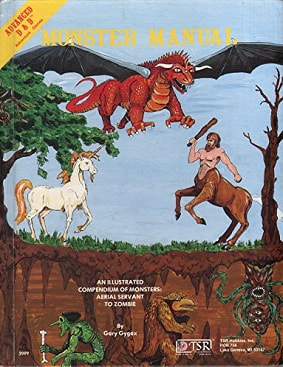
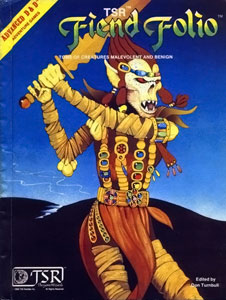
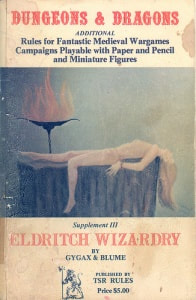
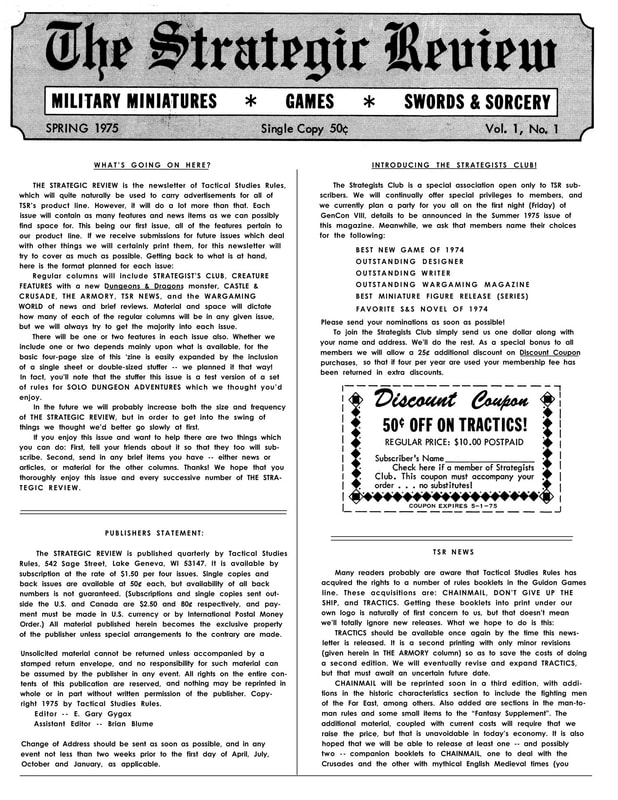
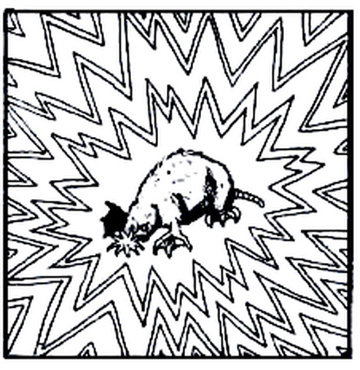
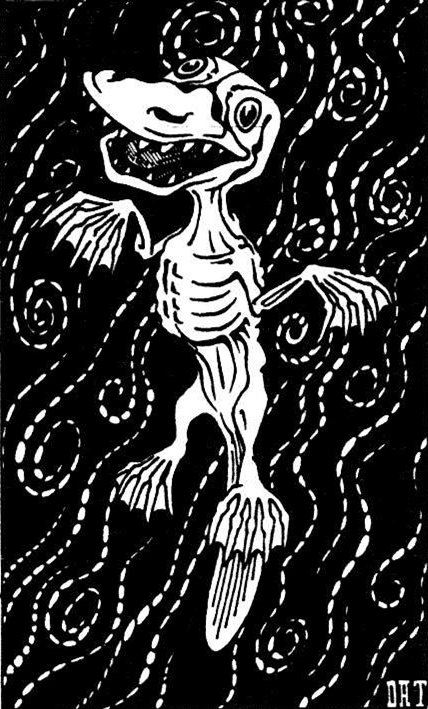
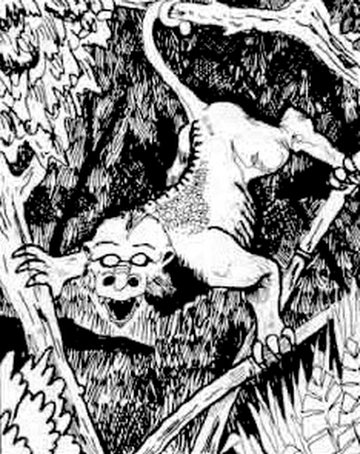
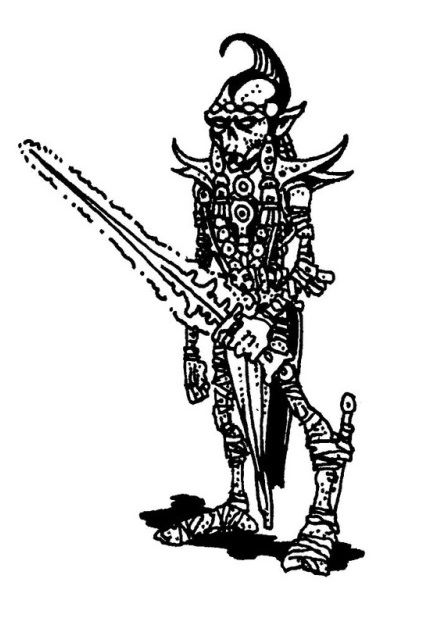
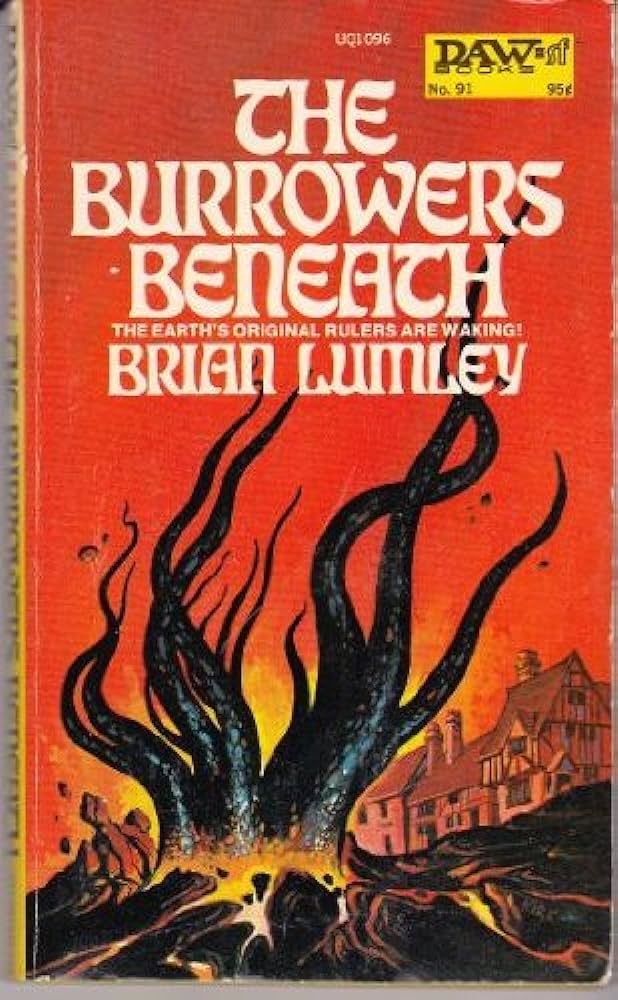
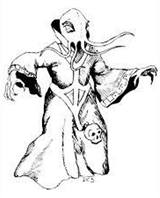
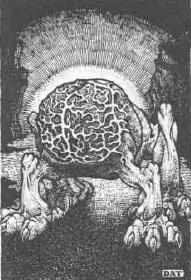
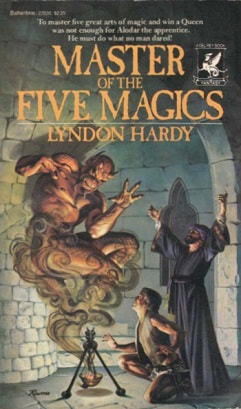
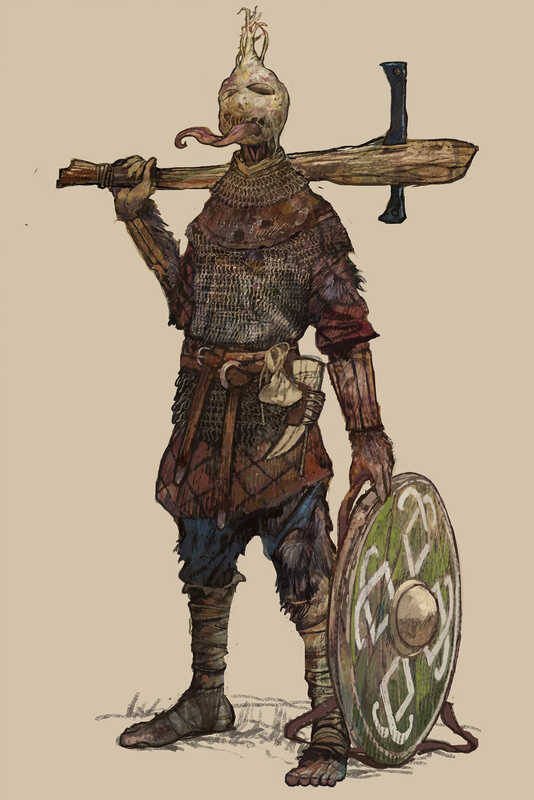
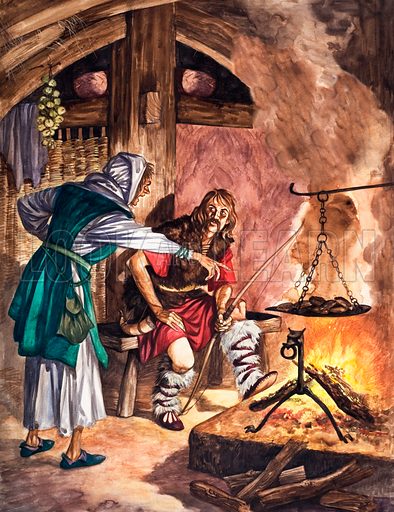
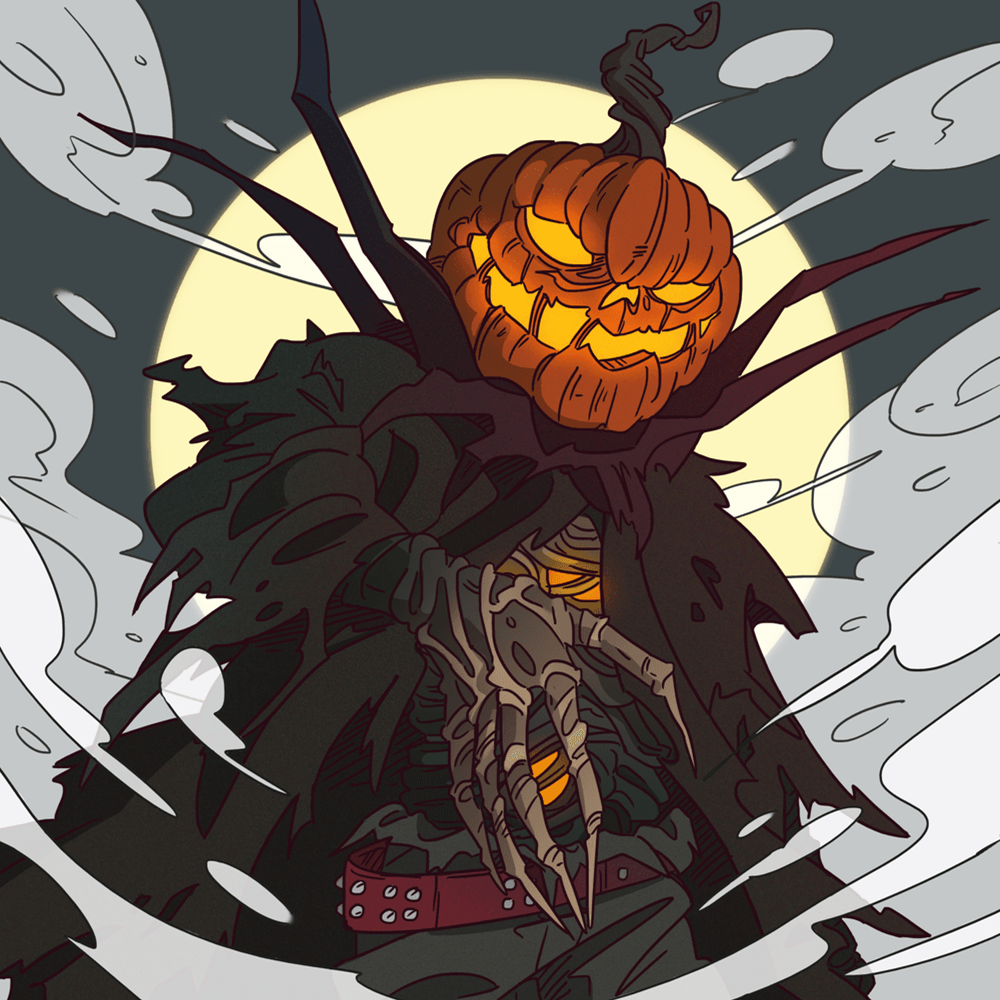

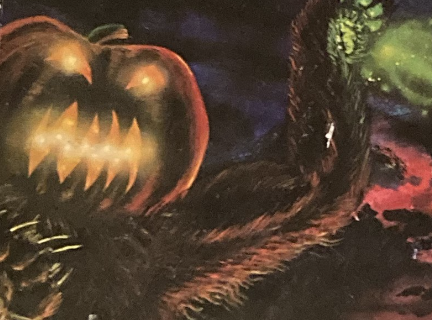
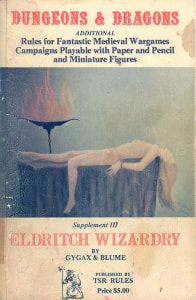
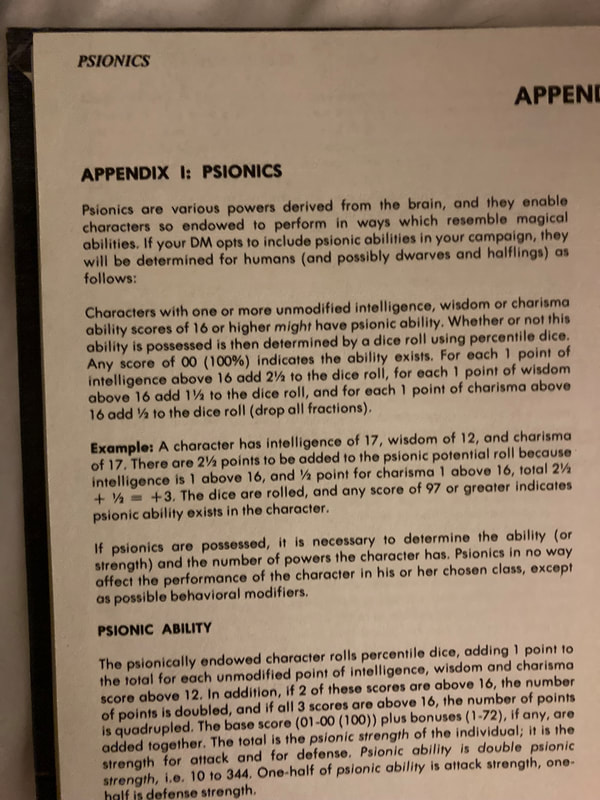
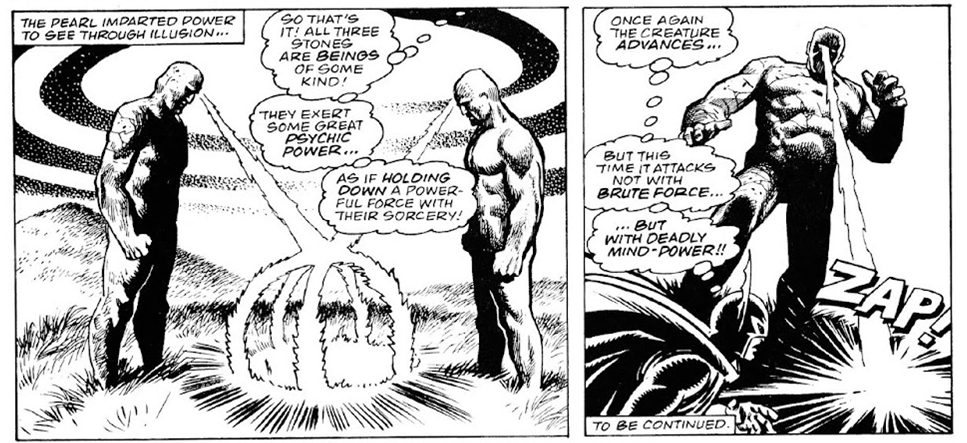
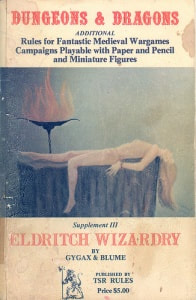

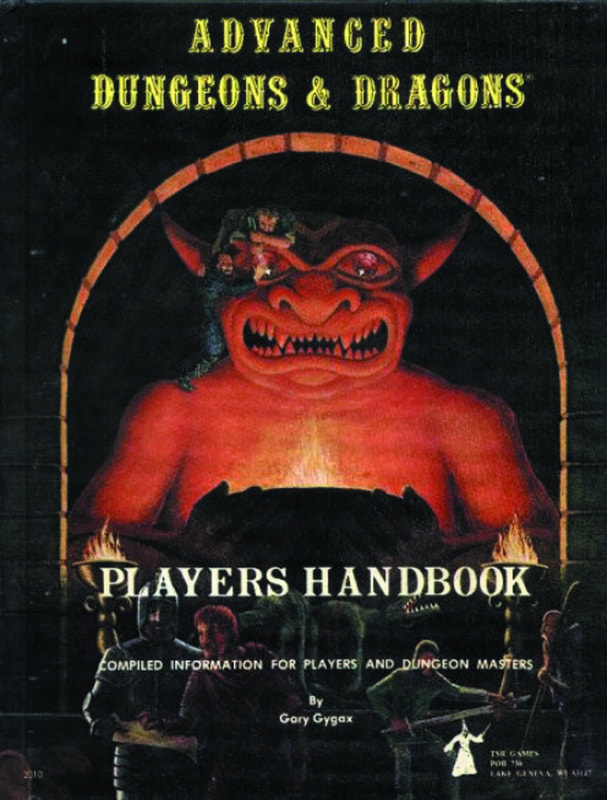
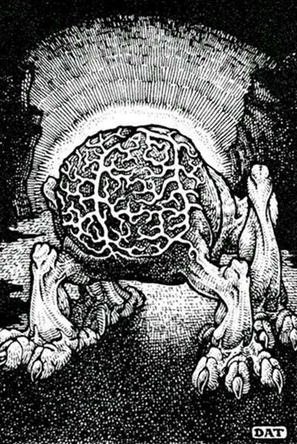
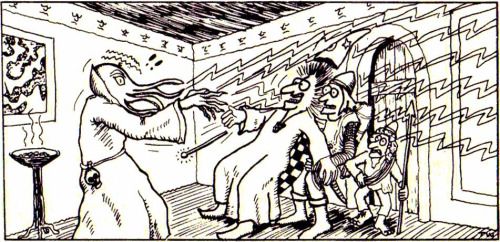
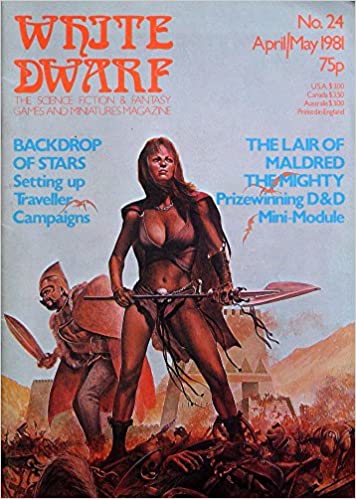
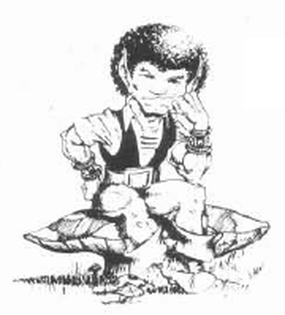

 RSS Feed
RSS Feed
